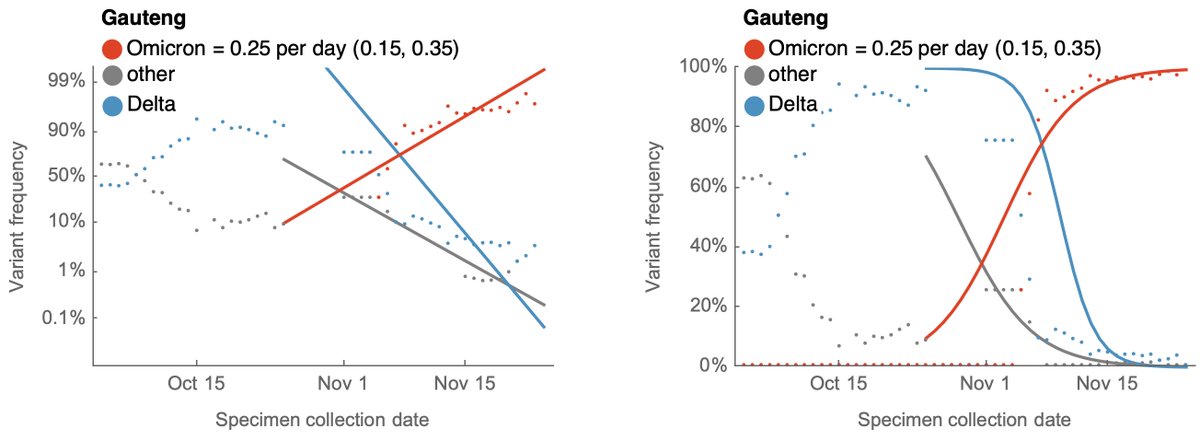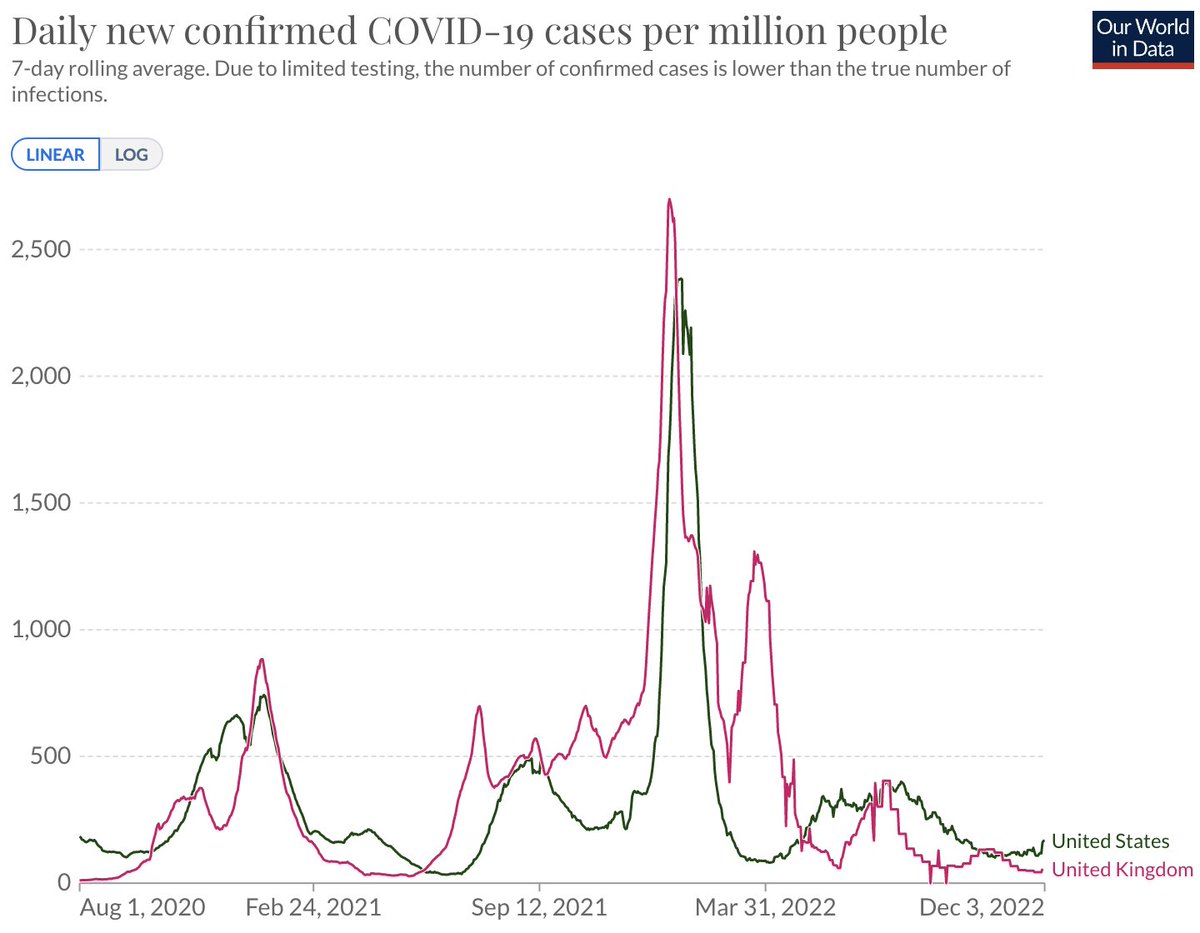As the Omicron epidemic continues to expand in South Africa and as case counts and sequencing data continues to come in, we can better estimate the current transmission rate of Omicron. 1/19
Here, I am focused on two approaches to estimate this transmission rate. One is growth in frequency of Omicron compared to Delta in Gauteng and the other is growth in case counts attributable to Omicron. 2/19
If one variant is fitter than anther variant and is transmitting faster in the population we should expect to see it increase in frequency following logistic growth. See @TWenseleers for discussion of this approach. 3/19
https://twitter.com/TWenseleers/status/1466502002498842626
A simple logistic growth fit to sequence data from specimens collected in Gauteng and shared to @GISAID gives a per day growth rate of 0.25 [95% CI 0.15-0.35]. 4/19 

Assuming a generation time for infection-to-infection of 5.1 days, this estimates the relative transmission advantage of Omicron over Delta as exp(growth rate × generation time) = 3.5 [95% CI 2.1-5.9]. 5/19
These estimates are still changing often as genomic data produced by @nhls_sa, @ceri_news and @nicd_sa comes in daily. 6/19
If we look at case counts instead, we can estimate Rt as the number of secondary cases caused by an index case at the current point in time. Higher Rt values indicate more rapid epidemic growth. 7/19
Estimates of overall Rt for Gauteng by @lrossouw has grown from ~0.8 in Oct to between 2.5 and 3 at the end of Nov (unsupervised.online/static/covid-1…). Note there is always a small lag in estimating Rt, as we need to measure backwards from the present. 8/19 

We can also use sequence data to partition case counts based on variant frequency. I was doing this previously in the spring as initial Alpha, Beta, Gamma variants spread across the world and later in the summer with Delta. 9/19
https://twitter.com/trvrb/status/1407466058617737219
If we take a similar approach using sequence data from @GISAID and case count data from @nicd_sa, we get the following picture for South Africa, where rapid increase in Omicron-specific cases is visible in Gauteng. 10/19 

Previously, @marlinfiggins ran with this basic logic and built out a Bayesian model to estimate variant-specific Rt through time. 11/19
https://twitter.com/trvrb/status/1447566579646930944
Applying the same method to sequences and case counts from Gauteng shows Delta Rt remaining around 0.8 through Nov, but Omicron Rt coming in at around ~3.8. 12/19 

Just doing a simple ratio of Omicron Rt in Gauteng / Delta Rt in Gauteng gives a ratio of ~4.0. This fits decently with the latest results from logistic growth analysis. 13/19 

These are still very early estimates and all this will become more clear as we get comparable estimates from different geographies and with different methods. But ballpark current Rt of Omicron in South Africa of between 3 and 3.5 seems pretty reasonable. 14/19
Note that both logistic growth and Rt estimates depend on assumed generation interval. Here, we've been using 5.1 days, while @TWenseleers is using 4.8 days. This alone will give a slight difference between estimates. 15/19
This estimate of Rt around 3 or 3.5 will become more precise for South Africa in the coming days, but even Rt of 3 is very high. Initial Rt of Delta in South Africa and the US was about 1.5. 16/19
https://twitter.com/trvrb/status/1447566575125495809
Initial pandemic spread in the US and Europe before mitigation measures went into effect had Rt of about 3.5. 17/19
https://twitter.com/trvrb/status/1248096618529710080
If Omicron Rt continues at around 3 this indicates a much larger threat in terms of case counts than Delta. I'm hoping that prior immunity protects against severe outcomes, but I'm very concerned about the size of the epidemic wave in the US and across the world. 18/19
The size of this wave will depend largely on the susceptible population. Although current data cannot fully address this, I suspect there is decent immune evasion and some individuals protected from infection by Delta will be susceptible to Omicron. 19/19
https://twitter.com/trvrb/status/1466076797670363140
• • •
Missing some Tweet in this thread? You can try to
force a refresh












